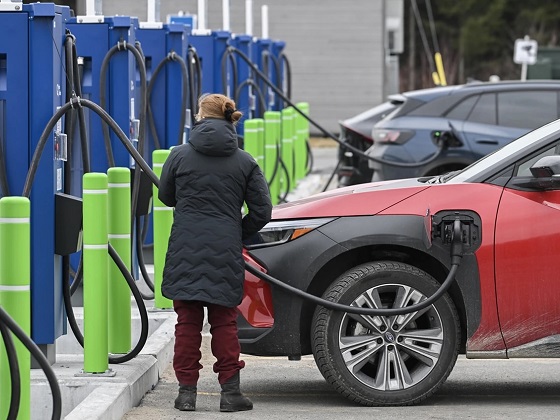Alberta
Province teaming up with Calgary company for a $2 Billion dollar upgrading facility near Edmonton

From the Province of Alberta
Made-in-Alberta plan moves $2-billion investment forward
Premier Rachel Notley’s Made-in-Alberta energy strategy is taking a major step forward in diversifying the economy, creating new jobs and adding more value to our resources.
Calgary-based Value Creation Inc. (VCI) and its wholly owned subsidiary Value Chain Solutions Inc. are on track to invest $2 billion in an upgrading facility in the Alberta Industrial Heartland, just east of Edmonton, which will create more than 2,000 construction jobs and another 200 full-time positions once the facility is up and running.
This is just the first of several new projects made possible through the Made-in-Alberta strategy to do more upgrading and refining of the province’s oil and gas resources here at home.
“We’re taking the bull by the horns and fighting to get full value for our oil. Albertans have been talking about this for decades, and we’re not content to sit on the sidelines and let good jobs and investment pass Alberta by for places like Louisiana. That has happened for too long and it has got to stop. We’re making sure the next generation of Albertans have the opportunities they deserve in a stronger, more resilient, more diversified province.”
VCI’s leading-edge facility will upgrade diluted oil sands bitumen into a higher-value crude blend that can flow easier through pipelines. This provides significant cost savings to industry because it would reduce the need for diluent, while increasing pipeline capacity by up to 30 per cent, and providing access to more refineries around the world that cannot currently accept Alberta’s oil sands bitumen.
The partial upgrading technology is expected to reduce greenhouse gas (GHG) emissions by 16 per cent per barrel compared to current processes used to extract bitumen.
“We here at Value Creation Inc. and Value Chain Solutions Inc. look forward to building upon Premier Rachel Notley’s vision of diversifying our energy markets and maximizing the value of the resources owned by Albertans. Our project is going to create good, long-term jobs with game-changing technology for low-cost upgrading and strong environmental performance.”
Through a letter of intent, the province has agreed to support the project through a $440-million loan guarantee, subject to reaching a final agreement. In all, Alberta is providing more than $3 billion in support for crude oil and bitumen partial upgrading and petrochemical upgrading, which turns Alberta natural gas into higher-value products like plastics.
“This government’s Made-in-Alberta upgrading program is a crucial element to ensuring these value-add investments happen in Alberta. Alberta’s Industrial Heartland is a key economic driver of the province’s economy, with potential for $30 billion in new investment by 2030. Upgrading more of our resources here at home means more jobs and more investment in our local communities, with new value chains that will help diversify our economy for generations to come.”
Construction of the Strathcona County-based project is already underway, with some foundational infrastructure in place and design work nearly completed. The plant is expected to be operational in 2022. Once completed, this would be the first commercial-scale partial upgrader in the world using this new technology, which VCI has been developing over several years.
VCI’s facility is just the first of others to be announced under Premier Notley’s Made-in-Alberta strategy, which is focused on creating jobs, adding value to our energy resources and exporting our products to new markets. This plan is at the heart of diversifying Alberta’s energy sector and making sure we get full value for the resources owned by all Albertans.
VCI project background
- The first phase of the Value Chain Solutions – Heartland Complex (VCS-H) will use 77,500 barrels-per-day (bpd) of diluted bitumen to produce a medium synthetic crude oil and an ultra low sulfur diesel, which is a cleaner-burning transportation fuel used here at home and around the world.
- Founded in 1999 and based in Calgary, Value Creation Inc. has nearly 1,200 square kilometres of oil sands land holdings in Alberta.
- The company has developed a plan to engage with Indigenous communities across the region for employment, contracting and long-term alliance opportunities.
- VCI’s technology is expected to help reduce GHG emissions by up to 16 per cent compared to current processes. This is the equivalent to cutting 620,000 tonnes of harmful emissions per year, or removing 135,000 cars from the road.
- The project is expected to generate roughly $2.5 billion in revenue to the province over the 30-year life of the project.
- Strathcona County is expected to receive about $280 million in municipal tax revenue over the life of the project.
Made-in-Alberta energy strategy
Partial upgrading of bitumen
- $1 billion in grants and loan guarantees to encourage companies to build bitumen upgrading facilities to:
- increase the value of our energy resources before shipping
- allow more volume to be shipped through pipelines
- Partial upgrading reduces the thickness of oil sands bitumen so it can flow through pipelines more easily, without having to be blended with diluent, or as much diluent, a thinning agent. Benefits include:
- higher prices for our resources
- more access to international markets
- cost savings on diluent for industry
- fewer emissions by removing high carbon content
- Partial upgrading is cheaper to do than full upgrading because it requires less processing.
- In 2016, oil sands companies in Alberta purchased $13.3 billion worth of diluent, much of it imported.
- Bitumen that goes to market without upgrading or refining has historically been sold at lower prices compared to other crude oils.
- Partial upgrading could help reduce this discount by improving the quality of the product and increasing the number of refineries capable of processing it.
Petrochemical upgrading
- Total support will now reach $2.1 billion to unlock about $20 billion in private-sector investment.
- This would help create as many as 15,500 jobs during construction of multiple petrochemical facilities across the province.
- Inter Pipeline’s Heartland Petrochemical Complex is already under construction as a result of this program:
- $3.5 billion private investment
- 2,300 construction jobs, 180 operational jobs
- The complex processes propane into plastic pellets called polypropylene, which is used around the world making kids’ toys, electronics and automotive parts.
Alberta
The case for expanding Canada’s energy exports
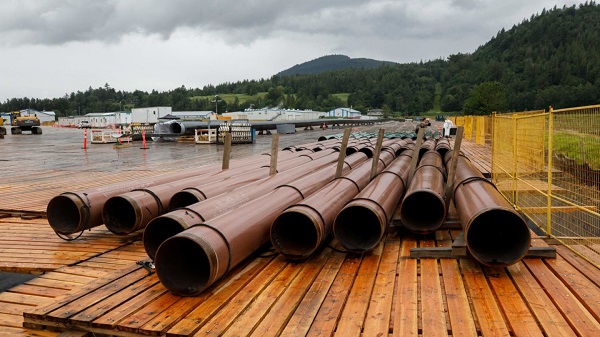
From the Canadian Energy Centre
For Canada, the path to a stronger economy — and stronger global influence — runs through energy.
That’s the view of David Detomasi, a professor at the Smith School of Business at Queen’s University.
Detomasi, author of Profits and Power: Navigating the Politics and Geopolitics of Oil, argues that there is a moral case for developing Canada’s energy, both for Canadians and the world.
CEC: What does being an energy superpower mean to you?
DD: It means Canada is strong enough to affect the system as a whole by its choices.
There is something really valuable about Canada’s — and Alberta’s — way of producing carbon energy that goes beyond just the monetary rewards.
CEC: You talk about the moral case for developing Canada’s energy. What do you mean?
DD: I think the default assumption in public rhetoric is that the environmental movement is the only voice speaking for the moral betterment of the world. That needs to be challenged.
That public rhetoric is that the act of cultivating a powerful, effective economic engine is somehow wrong or bad, and that efforts to create wealth are somehow morally tainted.
I think that’s dead wrong. Economic growth is morally good, and we should foster it.
Economic growth generates money, and you can’t do anything you want to do in social expenditures without that engine.
Economic growth is critical to doing all the other things we want to do as Canadians, like having a publicly funded health care system or providing transfer payments to less well-off provinces.
Over the last 10 years, many people in Canada came to equate moral leadership with getting off of oil and gas as quickly as possible. I think that is a mistake, and far too narrow.
Instead, I think moral leadership means you play that game, you play it well, and you do it in our interest, in the Canadian way.
We need a solid base of economic prosperity in this country first, and then we can help others.
CEC: Why is it important to expand Canada’s energy trade?
DD: Canada is, and has always been, a trading nation, because we’ve got a lot of geography and not that many people.
If we don’t trade what we have with the outside world, we aren’t going to be able to develop economically, because we don’t have the internal size and capacity.
Historically, most of that trade has been with the United States. Geography and history mean it will always be our primary trade partner.
But the United States clearly can be an unreliable partner. Free and open trade matters more to Canada than it does to the U.S. Indeed, a big chunk of the American people is skeptical of participating in a global trading system.
As the United States perhaps withdraws from the international trading and investment system, there’s room for Canada to reinforce it in places where we can use our resource advantages to build new, stronger relationships.
One of these is Europe, which still imports a lot of gas. We can also build positive relationships with the enormous emerging markets of China and India, both of whom want and will need enormous supplies of energy for many decades.
I would like to be able to offer partners the alternative option of buying Canadian energy so that they are less reliant on, say, Iranian or Russian energy.
Canada can also maybe eventually help the two billion people in the world currently without energy access.
CEC: What benefits could Canadians gain by becoming an energy superpower?
DD: The first and primary responsibility of our federal government is to look after Canada. At the end of the day, the goal is to improve Canada’s welfare and enhance its sovereignty.
More carbon energy development helps Canada. We have massive debt, an investment crisis and productivity problems that we’ve been talking about forever. Economic and job growth are weak.
Solving these will require profitable and productive industries. We don’t have so many economic strengths in this country that we can voluntarily ignore or constrain one of our biggest industries.
The economic benefits pay for things that make you stronger as a country.
They make you more resilient on the social welfare front and make increasing defence expenditures, which we sorely need, more affordable. It allows us to manage the debt that we’re running up, and supports deals for Canada’s Indigenous peoples.
CEC: Are there specific projects that you advocate for to make Canada an energy superpower?
DD: Canada’s energy needs egress, and getting it out to places other than the United States. That means more transport and port facilities to Canada’s coasts.
We also need domestic energy transport networks. People don’t know this, but a big chunk of Ontario’s oil supply runs through Michigan, posing a latent security risk to Ontario’s energy security.
We need to change the perception that pipelines are evil. There’s a spiderweb of them across the globe, and more are being built.
Building pipelines here, with Canadian technology and know-how, builds our competitiveness and enhances our sovereignty.
Economic growth enhances sovereignty and provides the resources to do other things. We should applaud and encourage it, and the carbon energy sector can lead the way.
Agriculture
Growing Alberta’s fresh food future
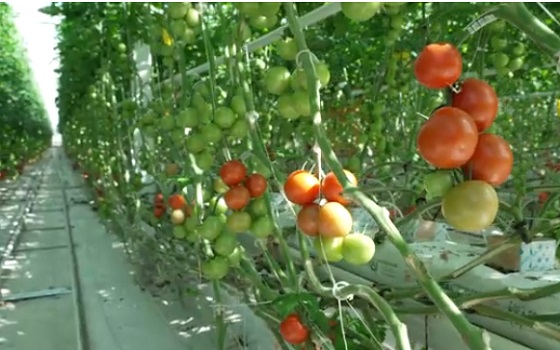
A new program funded by the Sustainable Canadian Agricultural Partnership will accelerate expansion in Alberta greenhouses and vertical farms.
Albertans want to keep their hard-earned money in the province and support producers by choosing locally grown, high-quality produce. The new three-year, $10-milllion Growing Greenhouses program aims to stimulate industry growth and provide fresh fruit and vegetables to Albertans throughout the year.
“Everything our ministry does is about ensuring Albertans have secure access to safe, high-quality food. We are continually working to build resilience and sustainability into our food production systems, increase opportunities for producers and processors, create jobs and feed Albertans. This new program will fund technologies that increase food production and improve energy efficiency.”
“Through this investment, we’re supporting Alberta’s growers and ensuring Canadians have access to fresh, locally-grown fruits and vegetables on grocery shelves year-round. This program strengthens local communities, drives innovation, and creates new opportunities for agricultural entrepreneurs, reinforcing Canada’s food system and economy.”
The Growing Greenhouses program supports the controlled environment agriculture sector with new construction or expansion improvements to existing greenhouses and vertical farms that produce food at a commercial scale. It also aligns with Alberta’s Buy Local initiative launched this year as consumers will be able to purchase more local produce all year-round.
The program was created in alignment with the needs identified by the greenhouse sector, with a goal to reduce seasonal import reliance entering fall, which increases fruit and vegetable prices.
“This program is a game-changer for Alberta’s greenhouse sector. By investing in expansion and innovation, we can grow more fresh produce year-round, reduce reliance on imports, and strengthen food security for Albertans. Our growers are ready to meet the demand with sustainable, locally grown vegetables and fruits, and this support ensures we can do so while creating new jobs and opportunities in communities across the province. We are very grateful to the Governments of Canada and Alberta for this investment in our sector and for working collaboratively with us.”
Sustainable Canadian Agricultural Partnership (Sustainable CAP)
Sustainable CAP is a five-year, $3.5-billion investment by federal, provincial and territorial governments to strengthen competitiveness, innovation and resiliency in Canada’s agriculture, agri-food and agri-based products sector. This includes $1 billion in federal programs and activities and $2.5 billion that is cost-shared 60 per cent federally and 40 per cent provincially/territorially for programs that are designed and delivered by provinces and territories.
Quick facts
- Alberta’s greenhouse sector ranks fourth in Canada:
- 195 greenhouses produce $145 million in produce and 60 per cent of them operate year-round.
- Greenhouse food production is growing by 6.2 per cent annually.
- Alberta imports $349 million in fresh produce annually.
- The program supports sector growth by investing in renewable and efficient energy systems, advanced lighting systems, energy-saving construction, and automation and robotics systems.
Related information
-
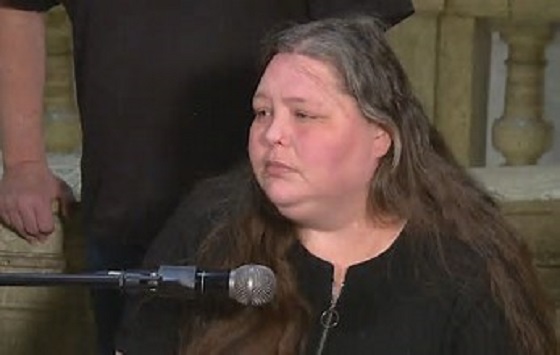
 Health2 days ago
Health2 days agoUS podcaster Glenn Beck extends a lifeline to a Saskatchewan woman waiting for MAiD
-
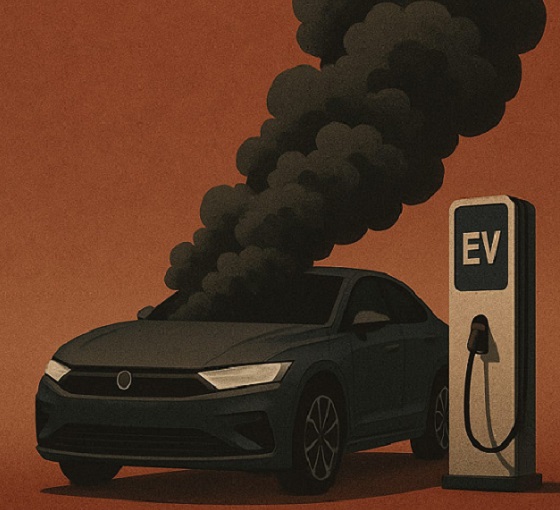
 Automotive1 day ago
Automotive1 day agoThe $50 Billion Question: EVs Never Delivered What Ottawa Promised
-

 Local Business1 day ago
Local Business1 day agoRed Deer Downtown Business Association to Wind Down Operations
-

 International1 day ago
International1 day agoTrump admin wants to help Canadian woman rethink euthanasia, Glenn Beck says
-

 C2C Journal1 day ago
C2C Journal1 day agoWisdom of Our Elders: The Contempt for Memory in Canadian Indigenous Policy
-

 Censorship Industrial Complex2 days ago
Censorship Industrial Complex2 days agoLiberals gain support for ‘hate speech’ bill targeting Bible passages against homosexuality
-

 Censorship Industrial Complex1 day ago
Censorship Industrial Complex1 day agoConservative MP calls on religious leaders to oppose Liberal plan to criminalize quoting Scripture
-

 Alberta1 day ago
Alberta1 day agoAlberta introducing three “all-season resort areas” to provide more summer activities in Alberta’s mountain parks





